Abstract
The addition of phenoxymethylpenicillin (10 mg/ml) at any time during the penicillin fermentation inhibited further accumulation of the antibiotic in broth but had no effect on growth. Benzylpenicillin, 6-aminopenicillanic acid (6-APA), and some semisynthetic penicillins also showed this effect, but penicillin N, penicilloic acid, cephalosporin C, and 7-aminocephalosporanic acid did not limit penicillin accretion. Incorporation of radioactive precursors (cysteine, valine, and sodium phenoxyacetate) into penicillin in the presence of inhibitory concentrations of the antibiotic indicated that penicillin synthesis continued despite the lack of accretion of the antibiotic in broth. The rates of penicillin synthesis in a 48-hr and a 136-hr culture were compared by short-term exposure to Na235SO4, and no significant difference in the biosynthetic rate was observed. Exogenous penicillin in the range of 1 to 15 mg/ml of culture broth had no effect on utilization of acetate or glucose by Penicillium chrysogenum. The antibiotic-synthesizing capacity of the organism was not irreversibly inhibited by exogenous penicillin. The degradation of penicillin during the fermentation was also studied. Penicillin V was stable in broth filtrate. Catabolic enzymes such as penicillinase and penicillin-acylase were not demonstrated in whole broth, nor was the accumulation of 6-APA, penicilloic acid, or other degradation products detected. An examination of the intracellular penicillin concentration and the amount of penicillin associated with the mycelium revealed that cells contained significantly more penicillin late in the fermentation than earlier in the cycle. This cell-associated antibiotic may be a regulatory factor in further penicillin synthesis.
Full text
PDF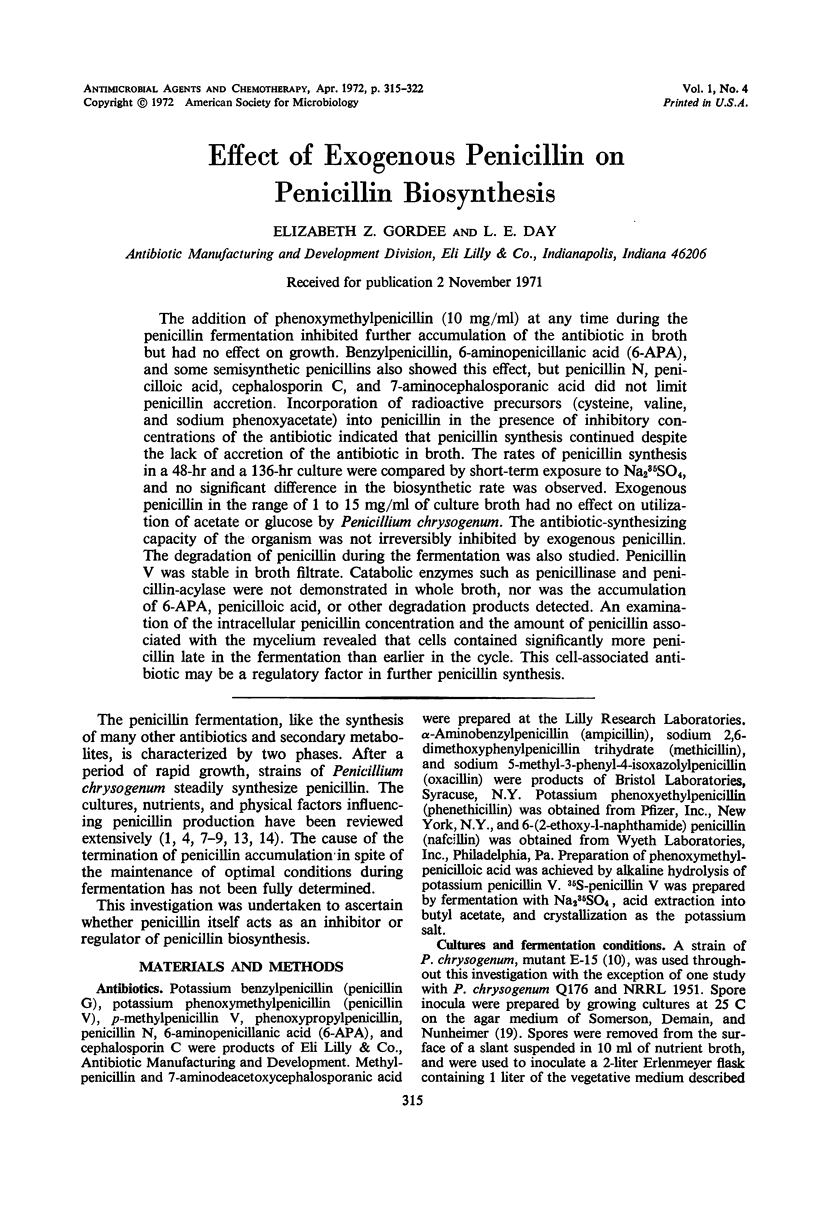
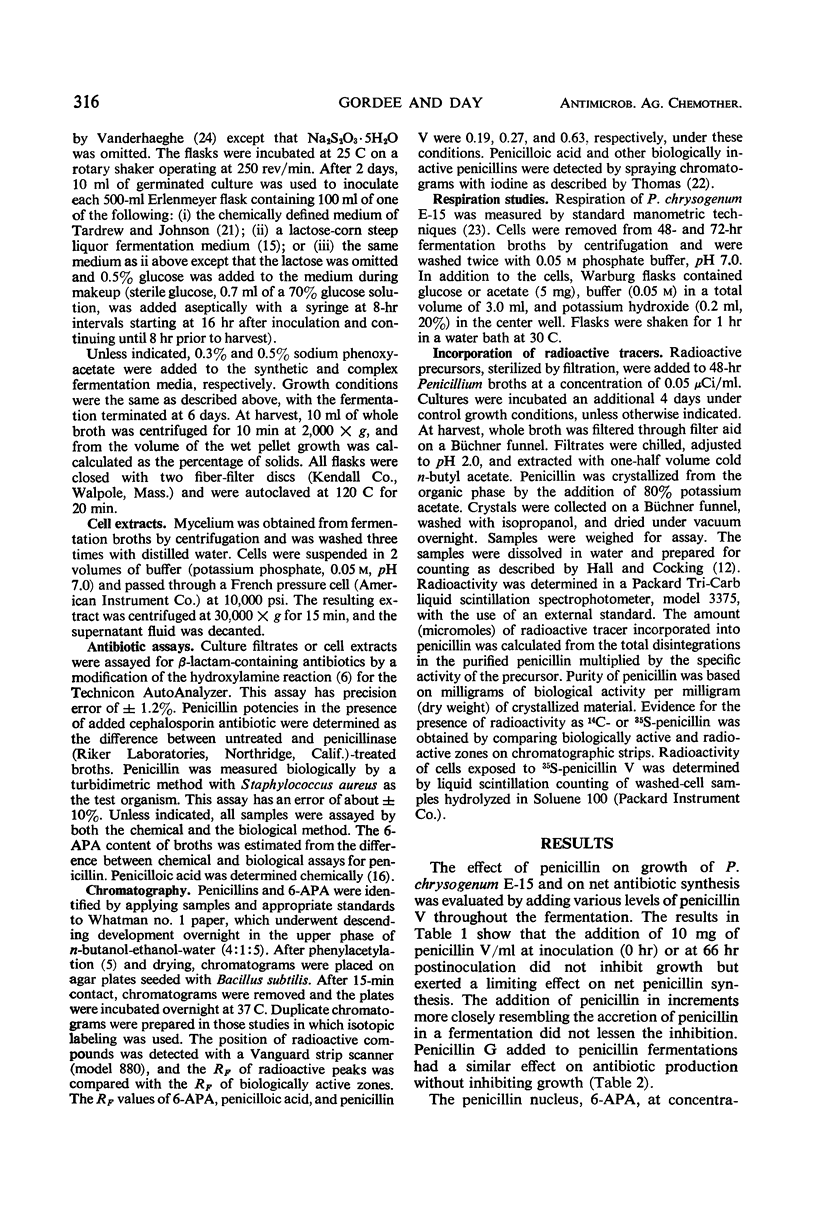
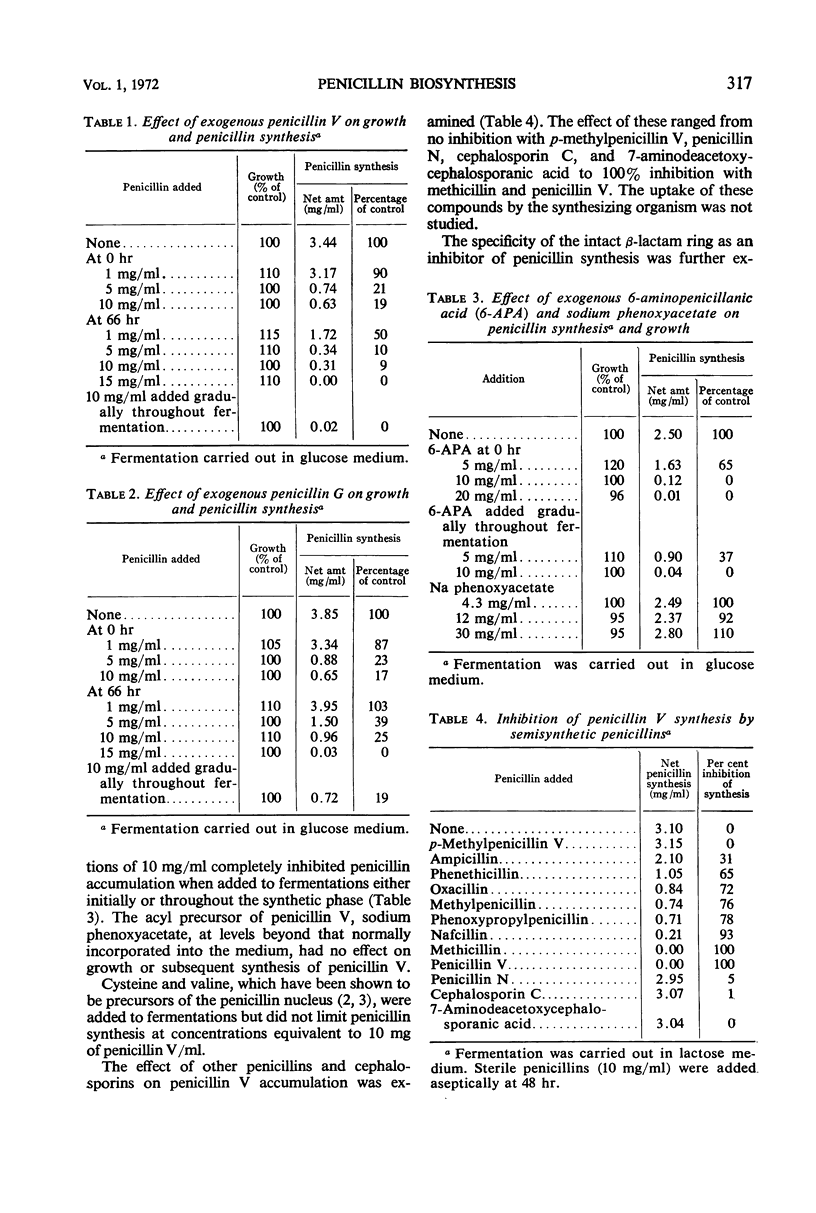
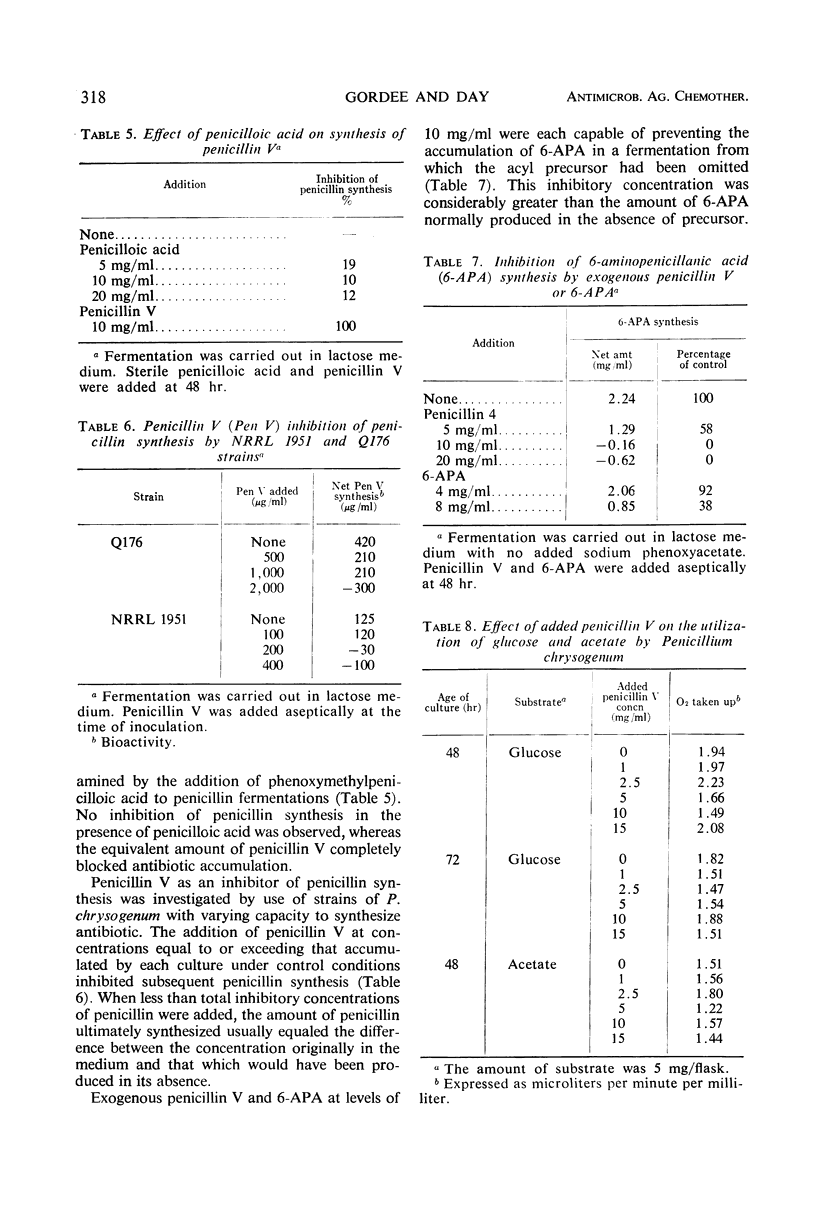

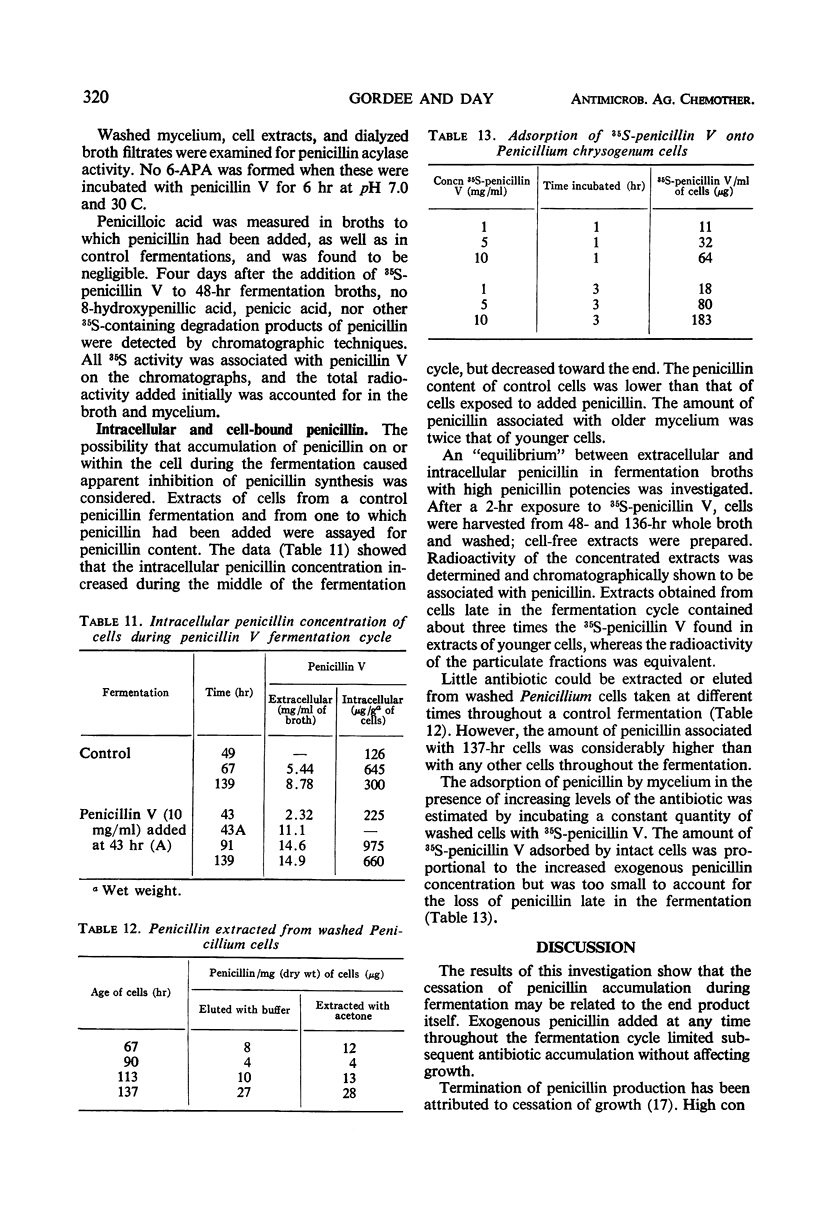
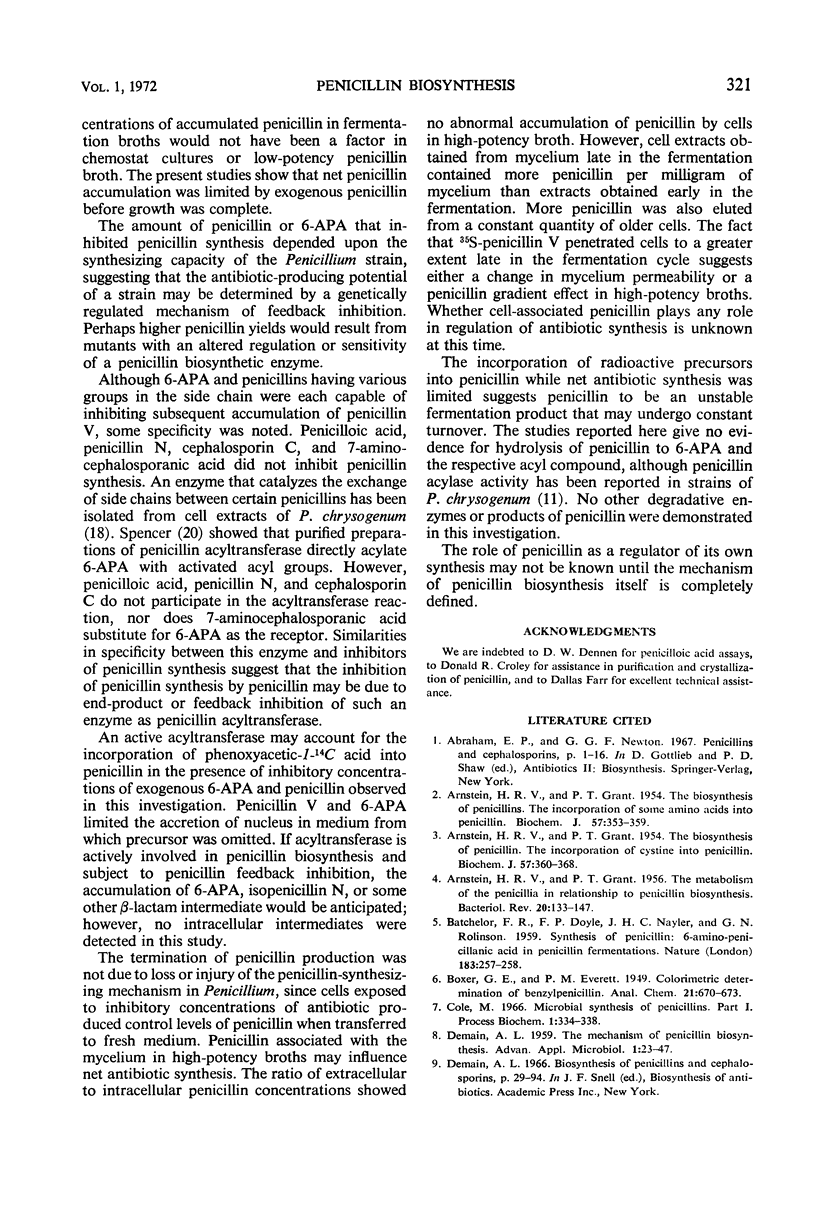
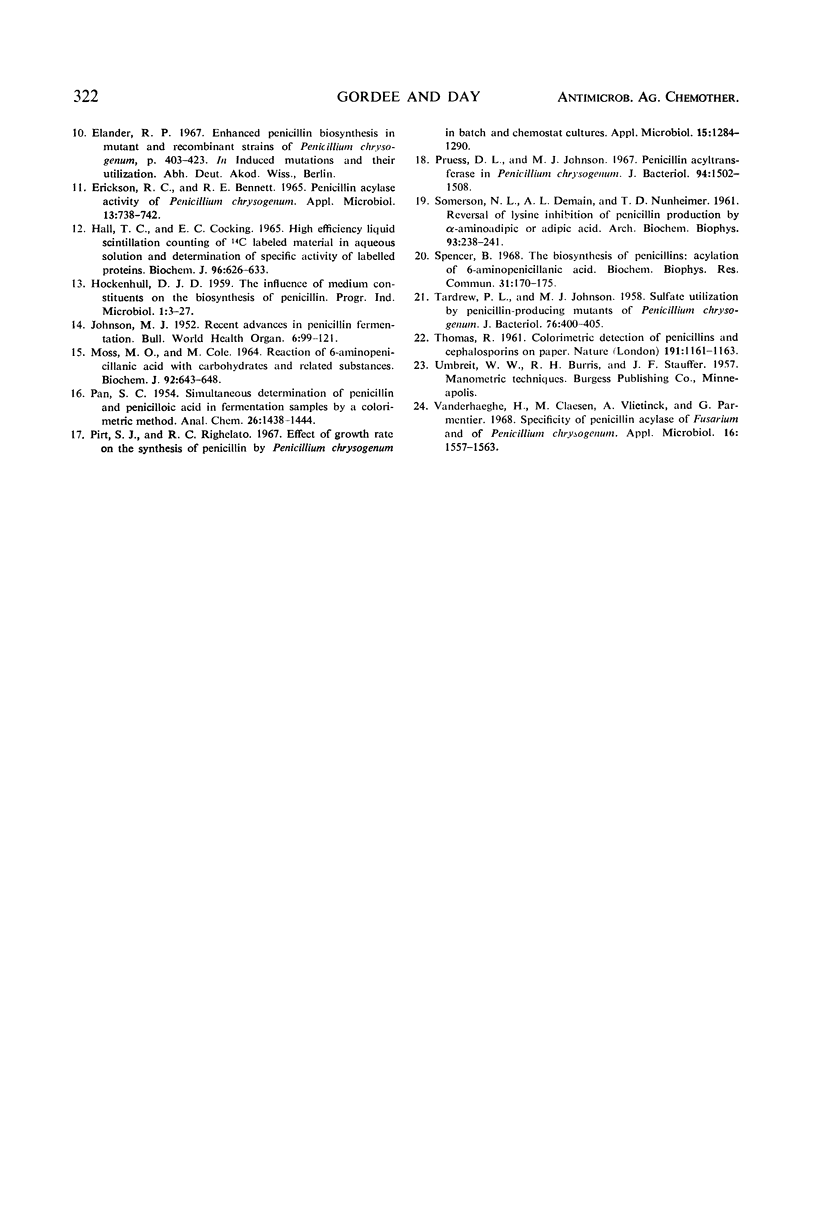
Selected References
These references are in PubMed. This may not be the complete list of references from this article.
- ARNSTEIN H. R., GRANT P. T. The biosynthesis of penicillin. 1. The incorporation of some amino acids into penicillin. Biochem J. 1954 Jul;57(3):353–359. doi: 10.1042/bj0570353. [DOI] [PMC free article] [PubMed] [Google Scholar]
- ARNSTEIN H. R., GRANT P. T. The biosynthesis of penicillin. 2. The incorporation of cystine into penicillin. Biochem J. 1954 Jul;57(3):360–368. doi: 10.1042/bj0570360. [DOI] [PMC free article] [PubMed] [Google Scholar]
- ARNSTEIN H. R., GRANT P. T. The metabolism of the Penicillia in relation to penicillin biosynthesis. Bacteriol Rev. 1956 Sep;20(3):133–147. doi: 10.1128/br.20.3.133-147.1956. [DOI] [PMC free article] [PubMed] [Google Scholar]
- BATCHELOR F. R., DOYLE F. P., NAYLER J. H., ROLINSON G. N. Synthesis of penicillin: 6-aminopenicillanic acid in penicillin fermentations. Nature. 1959 Jan 24;183(4656):257–258. doi: 10.1038/183257b0. [DOI] [PubMed] [Google Scholar]
- DEMAIN A. L. The mechanism of penicillin biosynthesis. Adv Appl Microbiol. 1959;1:23–47. doi: 10.1016/s0065-2164(08)70473-8. [DOI] [PubMed] [Google Scholar]
- Erickson R. C., Bennett R. E. Penicillin acylase activity of Penicillium chrysogenum. Appl Microbiol. 1965 Sep;13(5):738–742. doi: 10.1128/am.13.5.738-742.1965. [DOI] [PMC free article] [PubMed] [Google Scholar]
- Hall T. C., Cocking E. C. High-efficiency liquid-scintillation counting of 14C-labelled material in aqueous solution and determination of specific activity of labelled proteins. Biochem J. 1965 Sep;96(3):626–633. doi: 10.1042/bj0960626. [DOI] [PMC free article] [PubMed] [Google Scholar]
- JOHNSON M. J. Recent advances in penicillin fermentation. Bull World Health Organ. 1952;6(1-2):99–121. [PMC free article] [PubMed] [Google Scholar]
- Moss M. O., Cole M. Reactions of 6-aminopenicillanic acid with carbohydrates and related substances. Biochem J. 1964 Sep;92(3):643–648. doi: 10.1042/bj0920643. [DOI] [PMC free article] [PubMed] [Google Scholar]
- Pirt S. J., Righelato R. C. Effect of Growth Rate on the Synthesis of Penicillin by Penicillium chrysogenum in Batch and Chemostat Cultures. Appl Microbiol. 1967 Nov;15(6):1284–1290. doi: 10.1128/am.15.6.1284-1290.1967. [DOI] [PMC free article] [PubMed] [Google Scholar]
- Pruess D. L., Johnson M. J. Penicillin acyltransferase in Penicillium chrysogenum. J Bacteriol. 1967 Nov;94(5):1502–1508. doi: 10.1128/jb.94.5.1502-1508.1967. [DOI] [PMC free article] [PubMed] [Google Scholar]
- Spencer B. The biosynthesis of penicillins: Acylation of 6-aminopenicillanic acid. Biochem Biophys Res Commun. 1968 Apr 19;31(2):170–175. doi: 10.1016/0006-291x(68)90725-0. [DOI] [PubMed] [Google Scholar]
- TARDREW P. L., JOHNSON M. J. Sulfate utilization by penicillin-producing mutants of Penicillium chrysogenum. J Bacteriol. 1958 Oct;76(4):400–405. doi: 10.1128/jb.76.4.400-405.1958. [DOI] [PMC free article] [PubMed] [Google Scholar]
- THOMAS R. Colorimetric detection of penicillins and cephalosporins on paper. Nature. 1961 Sep 16;191:1161–1163. doi: 10.1038/1911161a0. [DOI] [PubMed] [Google Scholar]
- Vanderhaeghe H., Claesen M., Vlietinck A., Parmentier G. Specificity of penicillin acylase of Fusarium and of Penicillium chrysogenum. Appl Microbiol. 1968 Oct;16(10):1557–1563. doi: 10.1128/am.16.10.1557-1563.1968. [DOI] [PMC free article] [PubMed] [Google Scholar]


